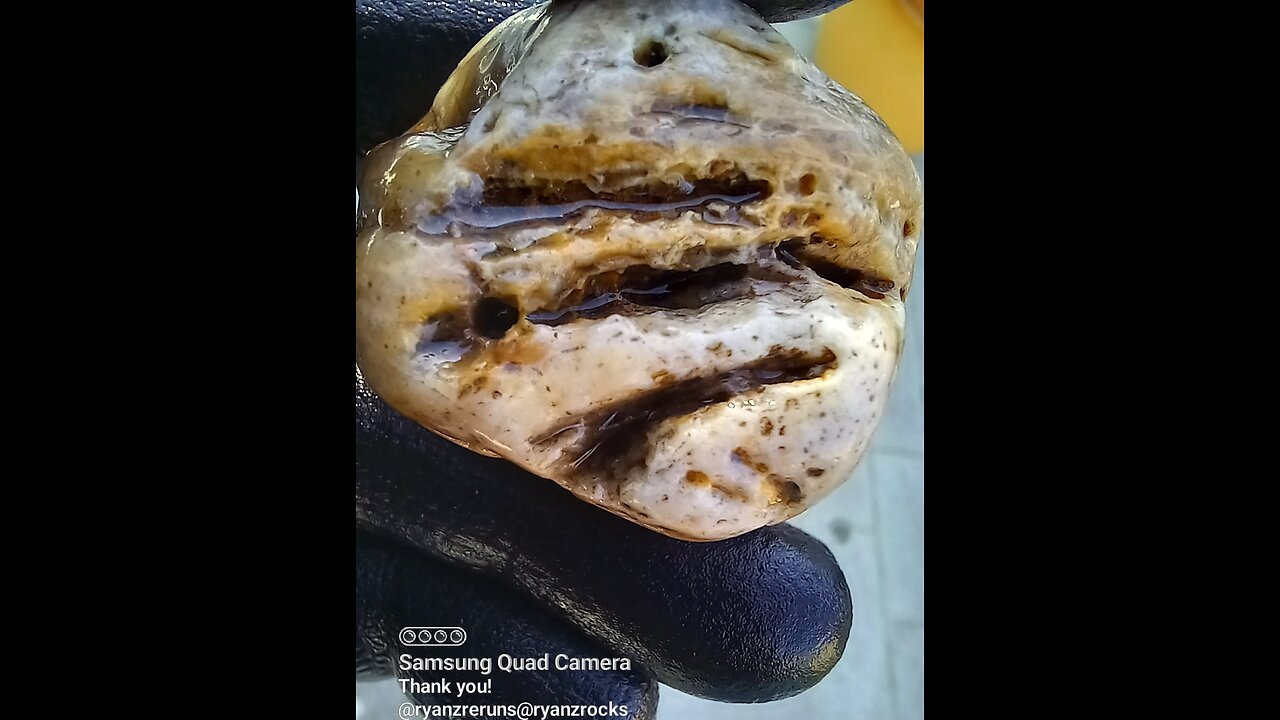Premium Only Content

Abused Limestone Nugget!
The rock in the image appears to be a type of **sedimentary rock**, specifically **limestone**. Here are some key observations leading to this identification: -
**Color and Texture**: The rock has a light, earthy color and a porous texture, which is typical of limestone. The small holes or vugs you see are often due to the dissolution of fossils or other minerals within the limestone. -
**Structure**: The visible layering and the way the rock appears to have been compacted suggest it was formed from sediments, which is characteristic of sedimentary rocks. - **Surface Features**: The rough, uneven surface with visible cavities and irregularities is common in limestone, especially when it has undergone some weathering. If you want to confirm this identification: - **Acid Test**: Limestone reacts with dilute hydrochloric acid, producing carbon dioxide gas. If you apply a few drops of acid to the rock and it fizzes, it's a good indication it's limestone. - **Hardness**: Limestone is relatively soft compared to other rocks. You can usually scratch it with a knife or even a copper penny. -
**Examine for Fossils**: Limestone often contains fossils. Looking closely or breaking the rock might reveal fossil fragments. Given the visual characteristics in the image, limestone seems to be the most likely identification for this rock.
-
 3:41:30
3:41:30
I_Came_With_Fire_Podcast
16 hours ago🔥USAID SCANDAL | MA-GAZA | Cartel VIOLENCE Ramps Up🔥
56.4K9 -
 7:57:34
7:57:34
SpartakusLIVE
10 hours agoShadow BANNED, but we PARTY ON || Friday Night HYPE
62.9K2 -
 2:00:53
2:00:53
Omar Elattar
8 hours agoGRANT CARDONE: “Will I Run for Governor?” | Trump EXPOSED | Bitcoin | $500 Billion Crisis!
43.5K10 -
 46:48
46:48
Glenn Greenwald
11 hours agoGlenn Takes Your Questions On Gaza, USAID, and More | SYSTEM UPDATE #403
81.7K49 -
 56:42
56:42
Candace Show Podcast
15 hours agoBecoming Brigitte: One Coincidence Too Many | Ep 3
166K174 -
 3:14:38
3:14:38
Nerdrotic
15 hours ago $18.38 earnedDisney Plus's Complete FAILURE! Fantastic Four Trailer, MCU Phase 5 Reveal | Friday Night Tights 340
148K46 -
 1:00:58
1:00:58
The StoneZONE with Roger Stone
11 hours agoWill RINOs Sink Robert F. Kennedy Jr.'s Confirmation? | The StoneZONE w/ Roger Stone
40.2K7 -
 1:15:19
1:15:19
Edge of Wonder
12 hours agoReal Biochip Implants & Havana Syndrome Exposed: Interview With Jesse Beltran
33.6K11 -
 1:00:12
1:00:12
Sarah Westall
12 hours ago10 Billion Trump Lawsuit against CBS 60 Minutes, Ukraine Bio-labs and more w/ John Mark Dougan
49.3K19 -
 57:07
57:07
LFA TV
1 day agoThe ‘Dictator’ Who Downsizes Government | TRUMPET DAILY 2.7.25 7pm
39.8K13